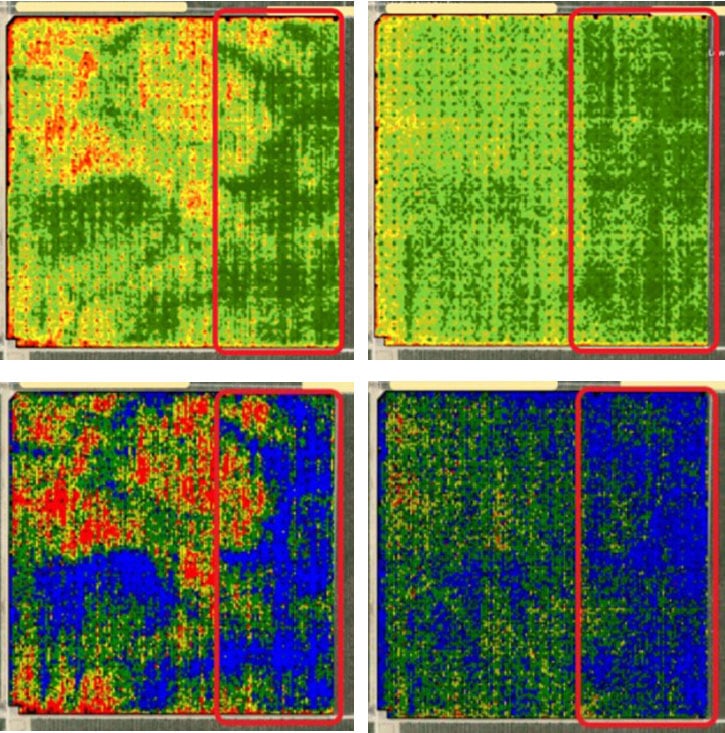“Using the data from Ceres Imaging’s chlorophyll and water stress layers, we can show growers the difference this product makes in side-by-side field trials.”
Penny Newman Grain Company began as a mercantile store in Fresno, California, in 1878. The company’s newest division offers a portfolio of products to help growers improve profitability through regenerative methods.

While extremely efficient when compared with flood irrigation, drip systems don’t flush the soil in the same way, which can result in high levels of salt in the soil. Synthetic fertilizers and pesticides also contribute to salt accumulation, as can heavy reliance on groundwater during drought years. The excessive salt kills off the microbes needed for healthy soil and creates a salt pan that impedes crop water and nutrient uptake, causing leaves to turn brown and look burnt.
Finn Telles, an account manager for the Farm Products Division at Penny Newman Grain Company, knew that improving soil conditions could help customers who were struggling with falling yields and stressed, unhealthy trees. His team could offer soil amendments that would help—but they needed to prove that their approach would work.
The team at Penny Newman Grain Company identified a soil amendment that nourishes the microbes that help supply the nutrients trees need. To prove the efficacy of the product, they conducted a field trial and used precise aerial data from Ceres Imaging to evaluate the results.
Finn says, “Using the data from Ceres Imaging’s chlorophyll and water stress layers, we could show growers the difference our program makes in side-by-side field trials. We can help growers reduce their synthetic inputs while still improving their plant vigor and plant health.”
Aerial imagery helped make a clear argument for Penny Newman Grain Company’s customers to invest in soil health—and they’re happy with the results. Mitch Yribarren, a fourth-generation almond grower, says, “I am spending less on annual input costs, saving a net $200 per acre on inputs. I no longer use gypsum, sulfur or compost. My petiole reports have never been so in line. Now I am much less short-term-minded and much more long-term-minded than ever before. We are using less phosphorus and potassium, and we now have the confidence to begin using less nitrogen as well.”
Penny Newman Grain Company used aerial data to demonstrate the efficacy of their approach to improving soil health. Their customers are saving $200 per acre on input costs and reducing their use of synthetic inputs.

“Now I am much less short-term-minded and much more long-term-minded than ever before. We are using less phosphorus and potassium, and we now have the confidence to begin using less nitrogen as well.”